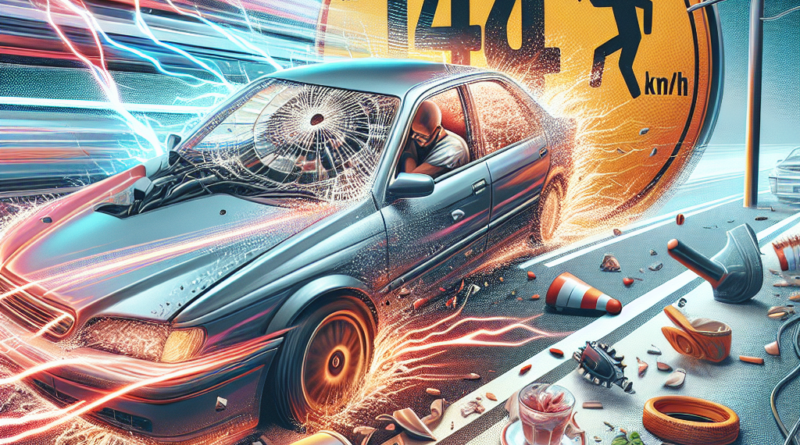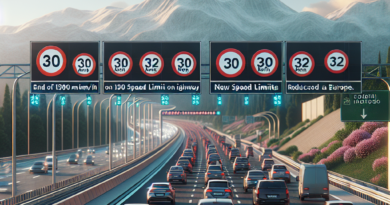The Science Behind Why Driving at 140 km/h is Not Advisable
The Dangers of Driving at 140 km/h
As driving speed increases, so does the risk of accidents due to the difficulty in controlling the vehicle.
Furthermore, the impact force is significantly influenced by the car’s speed, making it crucial to avoid excessive speed at all costs.
Adhering to speed limits is essential for safety (and your wallet), as exceeding them proves to be practically pointless.
Many individuals believe they can shorten their travel time by speeding, but the time savings are not as substantial as one might think.
When disregarding the associated risks, driving at 140 km/h is discouraged.
This speed is generally illegal in numerous countries, and science highlights that surpassing it yields no appreciable benefit.
The Math Behind Speeding
A Portuguese mathematics teacher detailed calculations to illustrate how much time is saved by increasing speed.
She examined the 120 km/h limit on highways in Portugal and the consequence of exceeding it by 20 km/h, thus reaching 140 km/h.
While the math is simple, it often appears counterintuitive due to common misconceptions.
For instance, at 60 km/h, it takes 60 seconds to travel one kilometer.
Doubling that speed to 120 km/h cuts travel time in half to 30 seconds per kilometer—which is significant.
However, maintaining speed limits offers a more negligible time difference.
To elucidate the time consumed at various speeds over one kilometer:
- 40 km/h: 90 seconds
- 60 km/h: 60 seconds
- 80 km/h: 45 seconds
- 100 km/h: 36 seconds
- 120 km/h: 30 seconds
- 140 km/h: 25.7 seconds
- 160 km/h: 22.5 seconds
In Portugal, the highway limit is 120 km/h, allowing for a maximum travel time of 30 seconds per kilometer.
Exceeding this only saves a mere 4.3 seconds at 140 km/h or 7.5 seconds at 160 km/h.
In Italy, the situation worsens since most highway limits are set at 130 km/h, requiring 27.7 seconds per kilometer, meaning driving at 140 km/h only saves about 2 seconds.
Gravity of Speeding
While higher speeds can reduce travel time, the savings are minimal.
Mathematicians emphasize that the urban environment, with its traffic, renders constant high speeds impractical.
The maximum time savings on a long 500 km trip might total around ten minutes.
In essence, driving at 140 km/h may feel fast, but the time saved is negligible.
Most drivers do not need to race against the clock, as daily driving isn’t a motorsport, especially considering the severe consequences of speed.
Speed is directly linked to traffic accidents, often exacerbated by distractions, due to significantly reduced vehicle control.
A slight miscalculation or movement can lead to disasters, with longer braking distances compounding the risk.
Additionally, higher speeds translate to greater impact forces during collisions, resulting in increased injury severity and fatality chances.
Even if a drive concludes without incident, speeding incurs fines per Article 142 of the Highway Code:
- Up to 10 km/h over: fines from €42 to €173.
- Between 10 km/h and 40 km/h over: fines from €173 to €694, plus a deduction of 3 points.
- Between 40 km/h and 60 km/h over: fines from €543 to €3,382, potential license suspension, and 6-point deductions.
- Over 60 km/h: fines from €845 to €3,382, license suspensions ranging from 6 to 12 months, and a deduction of 10 points.
Penalties escalate in cases of repeat offenses or accidents, and these may soon tighten under potential revisions of the Highway Code.
For more related information, check our comprehensive guide on the 2024 eco-incentives available at Money.it!




